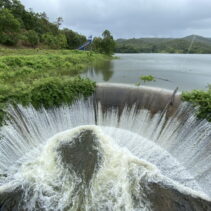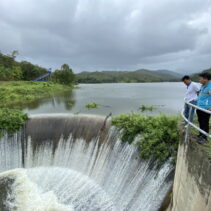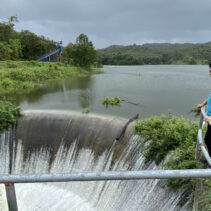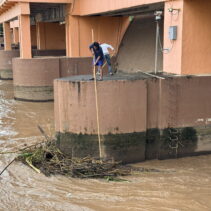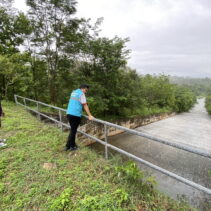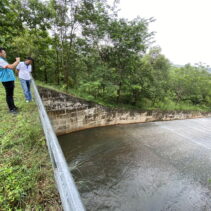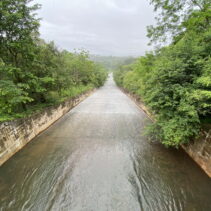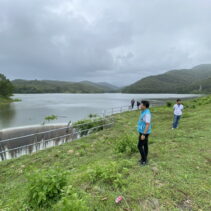Chanapat Kreuasri, Head of Water Allocation and Irrigation System Improvement Division of the Chiang Mai Irrigation Project, visited Phrao District to inspect the water levels of medium-sized reservoirs.
The Mae Saluam Watershed Management Station in Pa Nai Subdistrict had 161 mm of rainfall over the past week, followed by Ban Khun Jae Station in Mae Waen Subdistrict at 142.5 mm, Ban Thung Bua Khao Station in Mae Pang Subdistrict at 119 mm, and Mae Khon Reservoir measuring 90 mm. This resulted in an inflow of 1.4 million cubic metres of water into the reservoir. Currently, Mae Ko Reservoir contains 5.6 million cubic metres of water, which is at 101% of its capacity.
On July 21, 2025, the reservoir held 4.3 million cubic metres of water, or 79% of its capacity. The total water inflow accumulated over the past three days amounts to 1.5 million cubic metres, equivalent to 27.5% of the reservoir’s capacity. Currently the Chiang Mai Irrigation Project is releasing water at a rate of 3.63 cubic metres per second or 317,000 cubic metres per day, not affecting downstream areas, and water from Mae Ko Reservoir will flow into the Mae Ngad Somboonchon Dam.
Among the 13 medium-sized reservoirs in the area, three have water overflowing their spillways: Mae Khon Reservoir in Phrao District, Ban Mae Ta Krai Reservoir in Mae On District, and San Nong Reservoir in Mae Chaem District.
All units are inspecting weir fronts, sluice gates, and waterways under their jurisdiction. They are to remove obstructions from the Ping River and its tributaries to accelerate water flow toward Doi Tao Lake. Medium-sized reservoirs should maintain water levels no higher than 70% of capacity and increase discharge accordingly. They must also monitor downstream impact and continue reporting the flood situation to central authorities until conditions return to normal.
